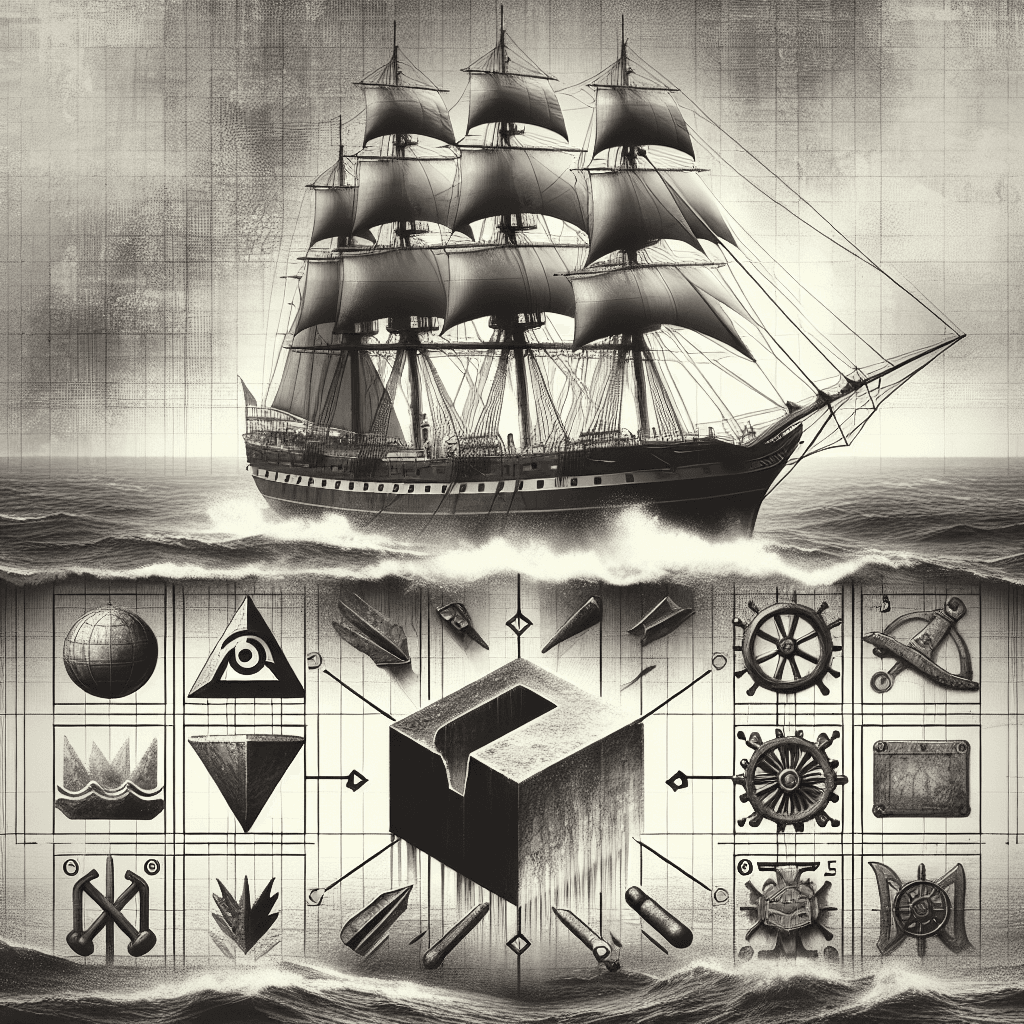Why do some ships have giant eyes painted on their bows
It’s not just quirky decoration; these painted eyes are part of an ancient tradition believed to see the way forward and ward off the evils of the sea.


Too Long; Didn't Read
TLDR: It's an ancient tradition from Greek and Egyptian sailors. The eyes were believed to guide the ship, ward off evil spirits and sea monsters, and bring good luck. Today, it's mostly a nod to that history for good fortune.
The Eyes Have It: Why Do Some Ships Have Giant Eyes Painted on Their Bows?
Have you ever stood at a harbor and noticed a pair of large, staring eyes painted on the bow of a fishing boat or even a larger vessel? It’s a striking image that seems both whimsical and ancient. This isn't just a random decoration; it's a maritime tradition stretching back thousands of years. Known as an oculus (Latin for "eye"), this practice is a fascinating blend of superstition, culture, and a deep-seated respect for the power of the sea. This post will look into the history and meaning behind these watchful eyes, exploring why this ancient custom continues to navigate its way into the modern world.
An Ancient Tradition for Safe Passage
The practice of painting eyes on ships is rooted in the beliefs of the earliest seafaring civilizations. Long before the invention of GPS or radar, sailors faced a vast and unpredictable ocean filled with real and imagined dangers. To protect themselves, they turned to powerful symbols.
The tradition is most prominently traced back to ancient Egypt and Greece.
- Egyptian Protection: Ancient Egyptian boats were often decorated with the Eye of Horus, a symbol of protection, healing, and restoration. It was believed this divine eye would ward off evil and guide the vessel safely through the treacherous waters of the Nile and beyond.
- Greek Guidance: The ancient Greeks, renowned for their maritime prowess, painted eyes on their warships, called triremes. These eyes served a dual purpose. Firstly, they were an apotropaic symbol, meant to ward off evil spirits, sea monsters, and the bad luck of the "evil eye." Secondly, they were thought to give the ship sight, personifying the vessel and allowing it to "see" its way through storms and find its destination, navigating past rocks and other hazards.
This practice wasn't limited to the Mediterranean. It was a common feature on ships sailed by Phoenicians, Romans, and many other cultures, all sharing the fundamental belief that the eyes offered supernatural guidance and protection on the perilous open water.
Cultural Significance Around the Globe
While its origins are ancient, the tradition of the ship's oculus is not just a historical relic. It has been carried forward and adapted by different cultures across the world, becoming a distinct part of their maritime identity.
One of the most famous modern examples is the Maltese Luzzu, a traditional fishing boat. These brightly colored vessels are almost always adorned with a pair of eyes, believed to be a modern version of the Eye of Osiris, an ancient Phoenician symbol of protection from evil. For the fishermen of Malta, these eyes are an essential part of the boat, a non-negotiable tradition passed down through generations to ensure a safe return and a bountiful catch.
Similarly, in parts of Asia, Chinese junks are often painted with eyes. A common belief tied to this practice is that the boat is a living entity, like a fish. The final step in building a junk is often a ceremony where the eyes are painted on, symbolically "awakening" the vessel. As a popular Chinese proverb says, "no see, no can go."
From Superstition to Modern Tradition
In an age of advanced naval technology, do modern sailors still believe these painted eyes will ward off a kraken or guide them through a storm? For most, the literal belief has faded, but the tradition endures for a number of compelling reasons.
- Honoring Heritage: The eyes are a powerful link to maritime history and the generations of seafarers who came before. It’s a way of honoring their legacy and courage.
- A Symbol of Good Luck: While a sailor today relies on their instruments, the tradition persists as a good luck charm. It’s a nod to the unpredictable nature of the sea—a little extra luck can’t hurt.
- Cultural Identity: For communities like those in Malta or parts of China, the eyes are a distinct cultural marker, a symbol of their unique relationship with the sea.
- Personification and Character: The eyes give a ship character, turning an inanimate object into something with a personality. It fosters a deeper connection between the crew and their vessel.
In conclusion, the giant eyes painted on a ship's bow are far more than simple decoration. They are a window into our shared maritime past, representing a timeless human desire for protection in the face of the unknown. This tradition has navigated through centuries of change, evolving from a deeply held superstition into a cherished symbol of heritage, luck, and identity. So the next time you spot a pair of eyes watching you from the bow of a boat, you’ll know you’re seeing a story that is as old as sailing itself—a sailor's enduring hope for a safe voyage home.
More Articles

Why is it safe to eat the mold in blue cheese but not on bread?
One mold is a carefully cultivated delicacy, while its cousin on your bread is growing dangerous, invisible toxins—we'll break down the crucial difference.

Why does fresh pineapple prevent gelatin desserts from becoming solid?
It's not a kitchen mistake; it's a case of culinary sabotage at the molecular level. Discover the powerful, protein-devouring enzyme in fresh pineapple that's actively digesting your dessert before it can even set.

Why are some ships deliberately fitted with metal blocks that are designed to be destroyed?
It sounds like madness, but these humble metal blocks are designed with a single, vital mission: to sacrifice themselves to the sea, preventing the ship's massive hull from being eaten alive.